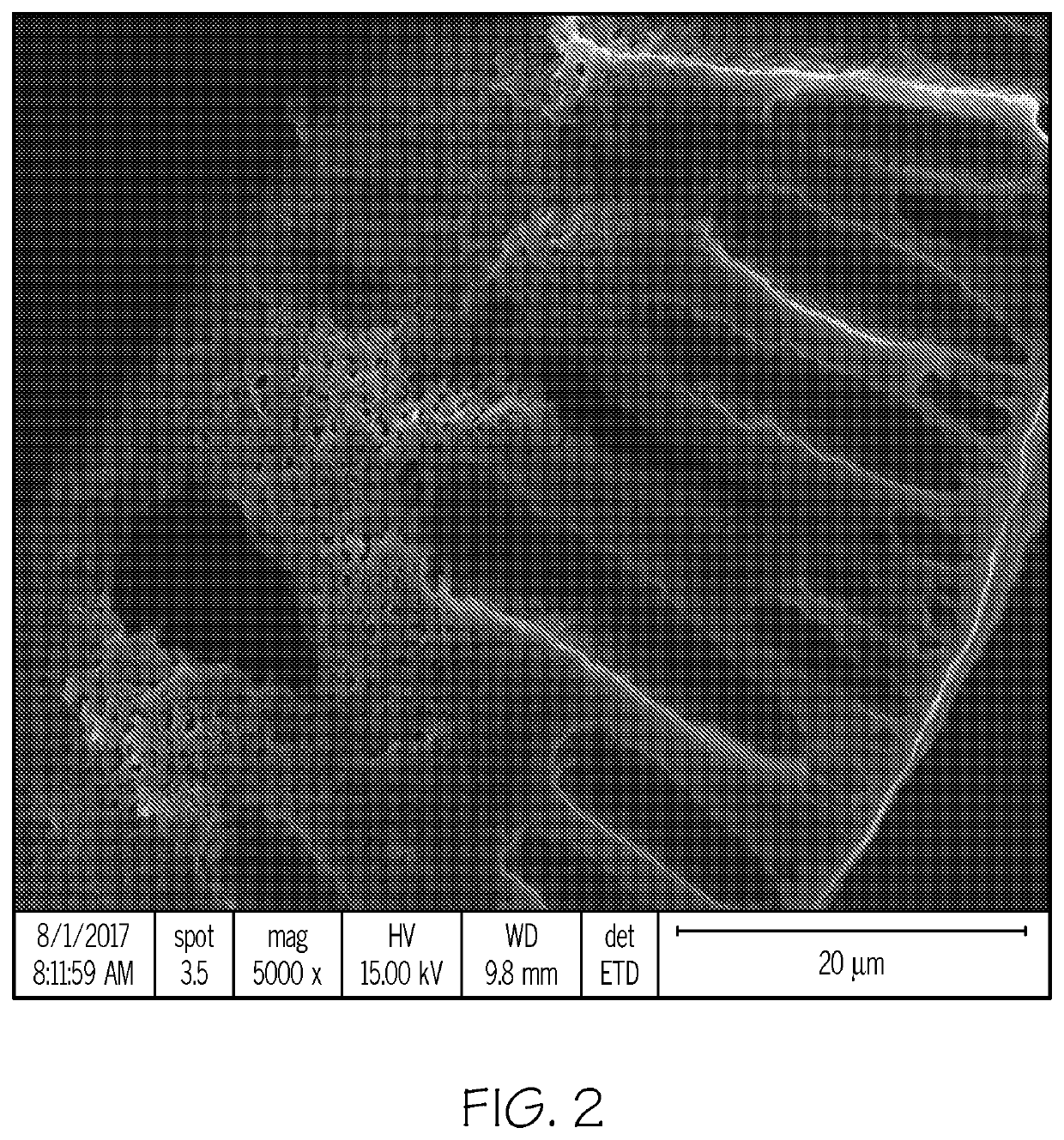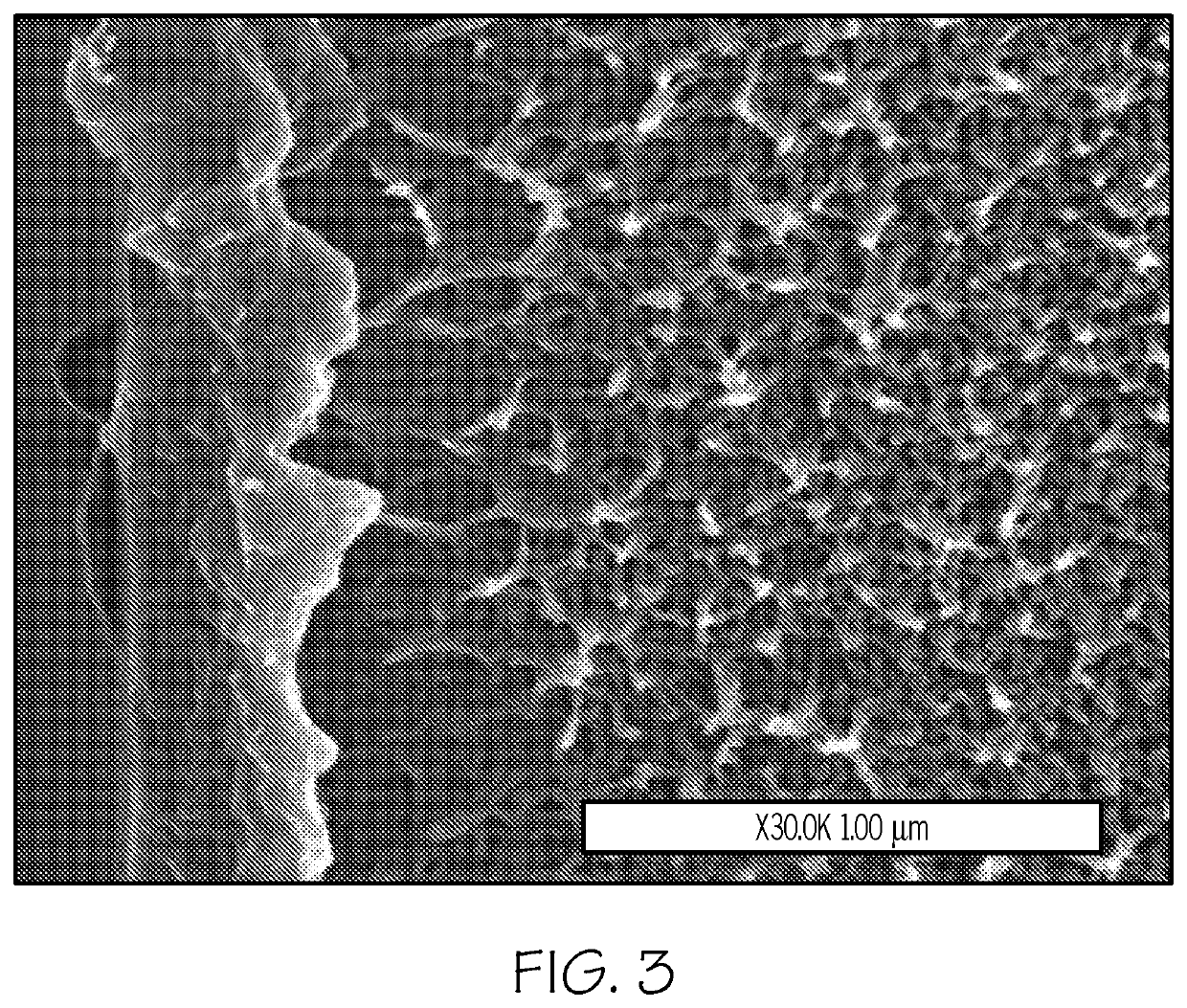Carbon Molecular Sieve Membrane Produced From A Carbon Forming Polymer-Polyvinylidene Chloride Copolymer Blend
a technology of carbon forming polymer and polyvinylidene chloride, which is applied in the field of polymer membranes, can solve the problems of low molecular olefin permeance, difficult to make hollow fibers without undesired, and commercially impractical fibers, and achieves improved permeance of desirable gases, good selectivity, and improved permeability
- Summary
- Abstract
- Description
- Claims
- Application Information
AI Technical Summary
Benefits of technology
Problems solved by technology
Method used
Image
Examples
examples 1-5
MS Films
[0057]XUS32904.01 PVDC resin, (The Dow Chemical Company, Midland, Mich.), is a PVDC copolymer containing about 4.8 wt % of methyl acrylate comonomer. The XUS32904.01 resin was dissolved with MATRAMID 5218 polyimide (Huntsman Advanced Materials Americas, The Woodlands, Tex.) or polyvinyl chloride (PVC) Mw˜62,000 and Mn˜35,000 (Sigma-Aldrich Inc., St. Louis, Mo., Part #189588) in tetrahydrofuran (THF), and n-methyl-2-pyrrolidone (NMP) available from Aldrich as shown in Table 1. The solvent polymer mixtures were heated to ˜60-80° C. to speed the polymer dissolution. The solution was cooled to room temperature before film casting. The polymer solution was poured onto glass plate and casted using a 10 mil knife. After 10 seconds, the glass plate with casted polymer solution was dipped into a water bath at room temperature causing phase inversion and resulting in asymmetric films. Asymmetric polymer films were obtained after about 1-3 days in the water.
TABLE 1Polymer Blend Composi...
example 6
Blend Asymmetric CMS Hollow Fiber
[0061]PVDC resin (XUS32904.01), MATRIMID 5218 polyimide, NMP, and THF were mixed in a three neck flask with a weight ratio of 6:18:60:16. The mixture was heated to ˜80° C. to speed the polymer dissolution to form a homogeneous dope solution.
[0062]The homogeneous dope was loaded into a 500 milliliter (mL) syringe pump and allow the dope to degas overnight by heating the pump to a set point temperature of 50° C. to 60° C. using a heating tape.
[0063]Bore fluid (85 wt % NMP and 15 wt % water, based on total bore fluid weight) was loaded into a separate 100 mL syringe pump and then the dope and bore fluid were co-extruded through a spinneret operating at a flow rate for of 180 milliliters per hour (mL / hr) for the dope; 60 mL / hr bore fluid, filtering both the bore fluid and the dope in line between delivery pumps and the spinneret using 40 μm and 2 μm metal filters. The temperature was controlled using thermocouples and heating tape placed on the spinneret...
example 7-8
Blend Asymmetric CMS Hollow Fiber
[0067]Example 7 was made using the same procedure as in Example 6, except the fibers were pretreated to a temperature of 170° C. prior to pyrolyzing.
[0068]Example 8 was made using the same procedure as in Example 6, except no pretreatment was performed with dehydrochlorination occurring during the pyrolysis heating.
PUM
| Property | Measurement | Unit |
|---|---|---|
| weight ratio | aaaaa | aaaaa |
| weight ratio | aaaaa | aaaaa |
| temperature | aaaaa | aaaaa |
Abstract
Description
Claims
Application Information
 Login to view more
Login to view more - R&D Engineer
- R&D Manager
- IP Professional
- Industry Leading Data Capabilities
- Powerful AI technology
- Patent DNA Extraction
Browse by: Latest US Patents, China's latest patents, Technical Efficacy Thesaurus, Application Domain, Technology Topic.
© 2024 PatSnap. All rights reserved.Legal|Privacy policy|Modern Slavery Act Transparency Statement|Sitemap



